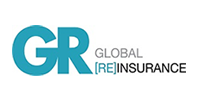Improved data models could prove vital in dismissing postcode generalisations and providing a more granular basis for underwriting
As Britain’s climate intensifies amid global warming and fraud hotspots evolve, insurers are quietly redrawing the nation’s personal lines map – street by street, postcode by postcode, property by property.
But in the race to refine risk and preserve profitability – across the flood-prone culverts of Whalley to the fraud-ridden backstreets of Bradford, for example – market asymmetry is taking root, driven not just by location specific perils, but by data.

The UK’s insurance industry is becoming bifurcated between policies that are empowered by rich, granular risk intelligence and the digitally disenfranchised, where cover is becoming more challenging to come by.
In Whalley, Lancashire, residents faced floods in 2015 and 2020. Located beside the River Calder, the village is a case study in recurring disaster, such as blocked culverts, overwhelmed infrastructure and “perilously close to disaster” water levels, as one Ribble Valley councillor put it in January 2025.
While properties in this area may qualify for subsidised household premiums under the joint government and industry Flood Re scheme, others – particularly post-2009 builds and conversions – are left exposed.
“We don’t shy away from covering those [high flood risk] areas, but we’ve got to make sure that we’re bringing in enough premium to pay the costs,” said Mark Eastham, chief executive at Avantia, parent company of home and property insurer Homeprotect.
Although Flood Re reports that it has helped more than 660,000 households access flood insurance over the last 10 years, its 2024/25 annual report – published in June 2025 – painted a clouded picture, with premium increases expected for the first time in its history.
This is because reinsurance costs have soared by £100m, Flood Re noted, requiring mid-year pricing adjustments to sustain the scheme’s solvency. The message is clear – while the scheme has succeeded, it is also under pressure, especially as it has a defined end date of 2039.
Alexandra Wyard, director of technical underwriting at Allianz Personal Lines, emphasised the need for collective responsibility. She said: “Like many insurers, we assess property risk at a granular level for many rating factors, so that we can be fair and consistent with our decisions and continue to offer insurance cover across as much of the country as possible.”
The data arms race
For insurers willing and able to invest in data models, however, there is an opportunity in this risk.
Read: Unawareness of crash for cash scams costing UK drivers
Read: Insurers paid £1.6bn in property claims in Q2 2025
Explore more motor related content here, or discover other news stories here
Avantia is one such player. “We will accurately price [high risk] areas,” Eastham said. “We will put effort into understanding those areas. And, therefore, there will always be a price that we will present in those areas.”
That data advantage yields market share. “If our competitors don’t [use similar data models to understand risk], then we will get more market share,” the Eastham continued. “I don’t think it’s a healthy place for the industry to be though, if only a few people are understanding those areas.”
Mark Varley, chief executive at location and risk service Addresscloud, agreed that data has an increasingly important role to play in ensuring access to insurance. He added: “Insurers are getting a lot smarter. Data companies and vendors like ourselves are spending an awful lot of effort on this.”
However, Varley warned that postcode level modelling can dominate for certain perils – especially crime. And the coarseness of that type of data has real-world consequences.
“Where I do see postcode data being used is [around] crime. It’s quite coarse,” said Varley. “It’s unlikely you’re going to have one street that’s a really high crime area and then you walk around the corner and it’s absolutely fine.”
The problem of fraud geography
Walk into BD3, one of Bradford’s most deprived districts, and you’ll hear stories that are not focused on rivers or rain – but fraudulent claims. This is perhaps not surprising, considering that Bradford Council describes the location as the ”5th most income deprived and 6th most employment deprived local authority in England”.
The Insurance Fraud Bureau (IFB) identified BD3 and nearby BD7 as insurance fraud hotspots in 2021 – and there is no evidence that things have eased since.
In October 2024, officers from the City of London Police arrested a man in Bradford on suspicion of making fake car insurance claims. A spokesperson for the force said the man, 41, was alleged to have claimed about £140,000 fraudulently.
In April 2025, a Bradford-based man was sentenced by Leeds Crown Court for attempting to defraud his insurer by making a false insurance claim, linked to a fake car collision in the US.
These examples raise a fundamental question – who decides what is uninsurable?
“Home insurance pricing is based on many different rating factors, including the location or size of a property, as well as factors that are unique to each customer,” said Carolyn Scott, head of home and travel underwriting at Aviva. “For perils impacted by the weather, such as flood and subsidence, we are most interested in the actual location of the property and the features of that location that influence the risk.”
Aviva insisted that it uses granular data beyond postcodes to inform underwriting, combining internal claims records with third party sources.
But even Aviva acknowledged that the line between insurable and uninsurable risks is becoming a more blurred grey area in the home insurance market.
When asked by Insurance Times whether there is a commercial threshold at which pricing becomes unsustainable, the answer was careful: “We have strong governance around the fairness of our pricing for customers,” Scott added. “We underwrite risk on an individual basis.”
This raises another point – is withdrawal from certain risks in specific postcodes a failure of the market, or just the market working as it should?
Can better data be the great equaliser?
Insurtech and MGA partnerships may offer a way forward and help insurers to gather relevant information upon which to base detailed underwriting. Addresscloud, for instance, advocates for precise, hexagon-based geospatial segmentation when it comes to property level data.
Better data models, therefore, could bring the insurance industry closer to a more ethical risk map – one that reflects true exposure, not postcode generalisations.
An ABI spokesperson echoed the importance of accessibility of insurance. They said: “Improving access to insurance is a priority for our industry and we’re working closely with the government’s Financial Inclusion Committee, consumer groups and stakeholders to help address it.”
Whalley and Bradford – flood and fraud risks. On the surface, they seem like opposites. But both locations are bound by a common fate – actuarial caution.
What does it mean to be insured in Britain today? The answer increasingly lies not just in the sky or the streets – but in the servers and data pipelines powering 21st century underwriting.

Hosted by comedian and actor Tom Allen, 34 Gold, 23 Silver and 22 Bronze awards were handed out across an amazing 34 categories recognising brilliance and innovation right across the breadth of UK general insurance.























































No comments yet